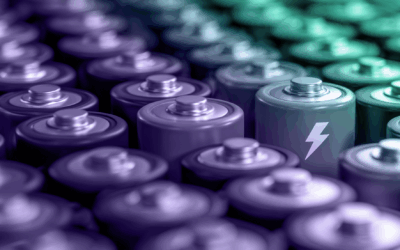September 18, 2023
By Daniel Silverberg, Co-head of Capstone’s National Security and Defense Practice
The Biden administration made its latest move last week in the great US-China global power game. The strategy: doubling down on infrastructure.
Capstone has long held that companies and investors are underappreciating the Biden administration’s emphasis on infrastructure investment as a means to counter Chinese control of energy supply chains and the extent to which this goal drives Biden’s foreign policy. For example, rapprochement with the Saudis and Indians stem from a core belief in the White House that safeguarding supply chains that will propel the green transition requires securing critical minerals and protecting the infrastructure to access those supply chains— including hard infrastructure such as railroads, pipelines, and 5G network technology. In the eyes of the White House, the Saudis are critical to this effort and must be kept within the US orbit amid Chinese inroads.
Capstone has long held that companies and investors are underappreciating the Biden administration’s emphasis on infrastructure investment as a means to counter Chinese control of energy supply chains.
We saw this principle play out in spades at this month’s G20. The main deliverable from the conference was a bold announcement of the construction of a rail-to-port corridor extending from India to Europe via Saudi Arabia, United Arab Emirates, and Israel. Signed by a broad array of allies, including the EU, France, Germany, India, Italy, Japan, Mauritius, the UAE, and Saudi Arabia, the landmark India-Middle East-Europe Economic Corridor (IMEC) constitutes an aggressive effort to strengthen western-facing energy distribution and telecommunications links and ensure that the US and its allies—and notably not China—controls key supply chains that will fuel the green economy.
Little appreciated but a highly critical component of the memorandum of understanding (MOU) memorializing the corridor is a reference to a “pipe for clean hydrogen transport.” If actualized, this pipeline would allow India and the UAE to transport clean hydrogen to Europe, a massive boon for Indian and Emirati developers and European consumers. It would also lock in Israel’s connections to the UAE and Saudi Arabia while freezing out the Chinese. Bottom line, the White House, in one move, potentially created a counter to China’s Belt and Road Initiative and opened a massive energy opportunity for Europe, India, and the Gulf.
The US also advanced the Lobito corridor in Africa—a second infrastructure project and transport route that could help secure access to critical minerals, which likewise would ensure China stays out of areas critical for US supply chains. Getting the EU on board with this initiative was a diplomatic coup for Biden. However, to manifest both the IMEC and Lobito corridors, Biden will need not only the financial help of the MOU signatories but also the support of Congress to reform the World Bank and raise funding levels of the US Development Finance Corporation.
Additional takeaways from the G20 include:
Likely Restrictions on 45V Tax Credit Guidance
The G20 communique drafted by G20 energy ministers referred to “mutually agreed harmonizing standards” when discussing the global hydrogen economy, which we believe supports Capstone’s view that there will be explicit restrictions for each of the three pillars in the Treasury Department’s upcoming release of preliminary Section 45V tax credit guidance for domestically produced clean hydrogen. rid-connected electrolytic hydrogen produced from renewable generation sources will be explicitly constrained by the three pillars (i.e., deliverability, time matching, and additionality) that are central to the broader discussion on Scope 2 emissions accounting. Given that the EU already endorsed this 3-pillar restrictive approach, we believe the reference to “mutually agreed harmonizing standards” indicates that, per Capstone’s previous guidance, there will be explicit restrictions for each of the three pillars in the Treasury’s upcoming release of preliminary 45V guidance.
Furthermore, we believe the language included therein underscores our view that the additionality pillar will not allow for new hydrogen production facilities to source electricity from renewable generation sources that went into service more than 36 months ahead of the electrolyzer it feeds, given that this is the EU’s existing requirement based on the guardrails included in ‘Delegated Acts’ published earlier this year.
Lack of Reference to Oil and Gas Phase-Out Signals Forthcoming Disagreement at COP28
The G20 communique left out explicit reference to the phase-out of oil and gas, which is what the EU and other more climate-focused countries were hoping to get from this meeting. Countries such as France have called climate commitments ‘insufficient.’ France and the EU are advocating for a phase-out of fossil fuels before 2050 (ideally 2040-2045). Instead, the G20 meeting committed to a ‘phase down’ of coal that is ‘in line with national circumstances.’ This contributes to our view that no consequential agreement will be reached at the United Nations Climate Change Conference (COP28) this December in the UAE. Saudi Arabia pushed back against renewable energy targets, promoting instead the use of carbon capture and storage (CCS). We see no indication of why this dynamic will be any different at COP.
No consequential agreement will be reached at the United Nations Climate Change Conference (COP28) this December in the UAE.
Capstone will continue to closely follow the myriad of underappreciated global infrastructure dynamics that will continue to have implications for global energy and supply chain security for both our corporate and investor clients.

Daniel Silverberg, Co-head of Capstone’s National Security and Defense Practice
Read more from Daniel:
Three Underappreciated Global Developments Impacting Energy Security
Biden’s Restrictions on Investment into China Is Just the Start of Chinese Investment Risk
Why Global Infrastructure is the Most Consequential Aspect of Biden’s China Policy
Read Daniel’s bio here.



























